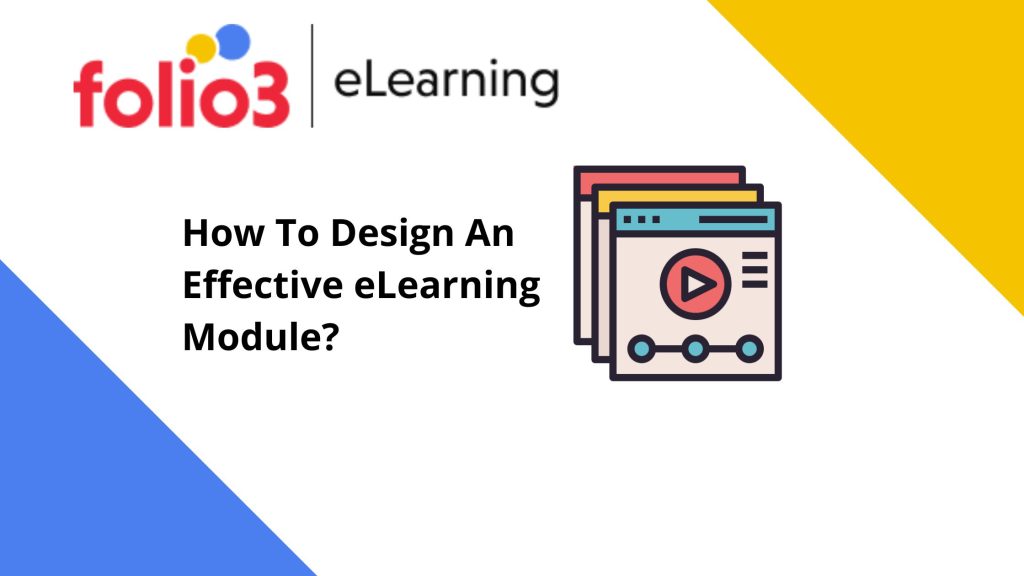
Executive Summary
The strategy that our specialists have been employing with highly valued clients to help them land a few of the most lucrative guidelines on eLearning module designing for greater opportunities will be shared in this article.
Introduction
The adoption of eLearning by trainers is on the rise as a result of the rise in remote work and the demand for opportunities for self-directed learning. It’s now widely accepted as the best way to distribute training materials in offices. Trainers are now faced with the difficulty of developing an efficient eLearning module that encourages student engagement.

8 Steps For Designing An Effective eLearning Module
Here is the tried and tested eLearning module designing approach which will guarantee your training success.
Step #1 – Ascertaining Your Needs And The Targeted Audience
You need to familiarize yourself with your target audience before beginning the challenging process of designing an eLearning course. Participants won’t benefit much from the training material you provide if your online course isn’t set up to match their needs.
To develop an eLearning module that engages participants and gives them meaningful information and gathers insights. You’ll need the assistance of trainees, managers, and other interested parties to do this. To gain a comprehensive grasp of the needs and objectives of each group, you can use surveys, assessments, and interviews.
Step #2 – Establish And Convey Learning Objectives
When training participants get the “why,” they are more likely to be interested and benefit from eLearning. Have specific learning objectives and explain them in a way that will assist learners to understand the benefit of participating to ensure that this occurs.
This might frequently be more difficult than trainers anticipate. Objectives are frequently written with the instructor’s goals rather than the participants’ goals in mind.
Moreover, instructors frequently utilize jargon, which makes it very difficult to understand learning objectives. Learning objectives should be SMART; Specific, Measurable, Achievable, Relevant, and Time-bound – goals in order to have a successful eLearning module.
Step #3 – Involving the appropriate stakeholders
Who should carry out the process of developing an eLearning course? Your initial thought may be to contact a subject-matter expert (SME). This strategy might not be the best one. But an SME should unquestionably take part by outlining the skills learners ought to be able to acquire and assisting to develop eLearning courses.
They might not view things from the same angle as trainees who are looking to understand and succeed. Training also entails developing skills that are independent of topic knowledge.
A variety of stakeholders, including subject matter experts, multimedia specialists, curriculum designers, team leaders, and presenters, should be involved in this stage of developing an eLearning course. Together, these parties may provide online training that engages learners, is aesthetically pleasing, and yields result that support corporate goals.
Step #4 – Creating A Course Outline
Every eLearning module will be connected to learning outcomes thanks to a course plan for the online environment.
Provide as much information as you can in your outlines to gain the most benefit from them. Make notes on where you want to incorporate activities and evaluations as well as the main ideas you want to cover in writing.
Step #5 – Creating Visual Mockups and Prototyping
You develop your eLearning module layout and visual style during the visual mockup phase.
The layout of the slides, general visual direction, color schemes, and button design are all part of this process. Use Adobe XD for this portion of the project like the available alternatives including Figma, PowerPoint, or even Storyline itself.
It is crucial to keep in mind that creating visual prototypes is an iterative process. You will develop a wide range of alternatives, then hone them, possibly even distributing them to stakeholders for comment.
Step #6 – Provide Various Educational Activities
You will be targeting people with a variety of learning styles and experiences, so keep that in mind as you develop a successful eLearning module for all of your learners. You should include this in your instructional design.
The best method to satisfy such a diverse range of demands is to provide a selection of educational activities. This makes sure that each participant can engage in the activity that will benefit them the best.
Step #7 – Incorporate assessments At Every Step
The importance of assessments in any training project is well-known among instructional designers. Nevertheless, a lot of them simply use this crucial tool at the end of each course, underutilizing it.
Prior to the course, assessments can set benchmarks and show what level of skill mastery a student has already attained. Apprentices will know if they fully completed the aim or if they need to retake the module according to the outcome of their assessments.
Try to incorporate interactive quizzes into each course module after covering key subjects.
Step #8 – Building Exercises Around Real-World Scenarios
You should have clarified eLearning module objectives that show students how what they’re studying may be applied in the real world. That’s wonderful, but you’ll need to return to it again to keep people interested.
Create assignments based on situations that students will face in real life. When illustrating whole scenarios, be sure to show the results that students will experience after applying their knowledge.
Final Words
You may advance your career and better serve your audience if you can stop building information-dump eLearning and start creating story-driven, scenario-based learning experiences. Whether you’re designing learning experiences for a global audience of learners or for your own portfolio, only the tried-and-true eLearning module design approach described in this article will guide you in the correct direction.










